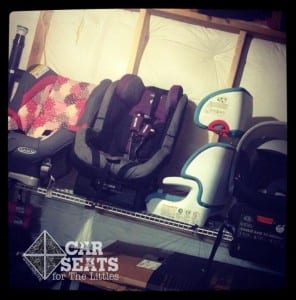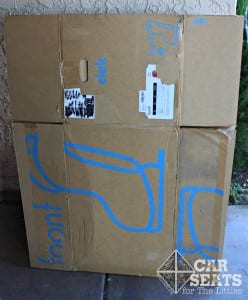Now that your little has outgrown her seat, you may want to keep it safely stored away for future use. Unsure about how to do it properly? You’re not alone. While there is no one singular “correct method” for storing an unused restraint, different things may work for your particular climate and storage space. While the elements can have an effect on the condition of your restraint, you don’t need to vacuum seal your child restraint or necessarily keep it in a climate controlled storage unit. Though it will eventually expire, it isn’t perishable and it doesn’t require air conditioning. However, there are some steps you can take to help make sure the your restraint is safe to use later on.
Some issues to be aware of are: moisture, mold or mildew, bugs or pests, and even critters. There’s nothing like finding out that there were mice making a home out of your unused Foonf or getting ready for your new baby and discovering mold on the harness straps. Many parents have been surprised by such unpleasant situations. Have hope! There are a few easy steps you can take. The first is very simple; You’ll want to make sure that the restraint is clean and dry, with all the extra pads, parts, and paperwork in a bag or otherwise stored with it. Next, you’ll have to consider what you do for items you are very attached to. Do you keep them outside or inside? Is the garage frequented by bugs? Perhaps the basement is damp? Maybe there’s an indoor closet with plenty of room? These are all things to consider, and you probably have a good idea of what will work for you in your home already. We happen to have ample closet space in the master bedroom, so that is where I kept our infant seats for the few months before our baby was born. It’s air-conditioned and dry, which is great. I didn’t use any bags or bins, but I made sure not to stack things on top of them and that they weren’t mistreated by our 2-legged critters who may have been playing around the area.
What if there isn’t a surplus of inside closet space? Well, an inside space that’s perhaps not climate controlled, like a garage, basement, or attic can also work. We have a storage room that isn’t quite as nice as the inside closets, but most of our unused restraints go there. It’s pretty dry but sometimes very warm here in the southwest, so we don’t generally have problems with too much moisture, even during monsoon season. However, being here means that we’ve got critters and pests, so we take general measures to keep them outside. You may have to choose a “less than ideal” storage space, too, but definitely use your best judgment; you know your home best.
Whether you have an indoor or outdoor storage space, you may want to consider taking additional steps such as removing the harness and padding, if possible. Using a large plastic bin, storage bag, or even a plastic bag to cover the car seat can be helpful, but you may want to only loosely cover the restraint to keep moisture from getting trapped inside. Before using chemicals or other items used to remove moisture from the air in a box, bin, or bag, check the labeling for warnings, when in doubt, contact the restraint manufacturer.
If you’re like me, you may have kept your restraint’s original box. This is a box for one of our car seats, which we’ve flattened for easy storage.We move relatively often, and we’ve made a habit of keeping the boxes for different things so that they can be properly packed for our next move. The original box is generally preferred over other storage options because it’s meant to fit your restraint and to protect it during storage and shipping while en route to retail locations and your home. We recently moved, and I used standard heavy-duty moving/shipping boxes to transport unused child restraints; these can be found at many local retailers in most places. A box of any type isn’t likely to be waterproof, though, which is something to keep in mind.
There are many things to consider when deciding how and where to store an unused restraints in your bedroom closet, your garage or shed, or a storage facility, I’d recommend checking on it now and then if you have any specific environmental concerns . When you’re ready to use it again, carefully inspect it damage, signs of mold or critters, and check to be sure that you have all the parts, accessories, and the manual. If you need to clean the harness, padding, or plastic shell, remember to consult the manual for the manufacturer’s instructions. Generally, you’re only allowed to use a damp cloth on the harness, and you’ll want to avoid harsh chemicals. You will want to double-check that there haven’t been any recalls for the restraint while it wasn’t being used and it is probably a good idea to re-read the manual to refresh your memory before using and installing the restraint in your vehicles. We always recommend that parents have their restraint installations checked by a CPST or CRST, even if you’ve used the restraint before.


